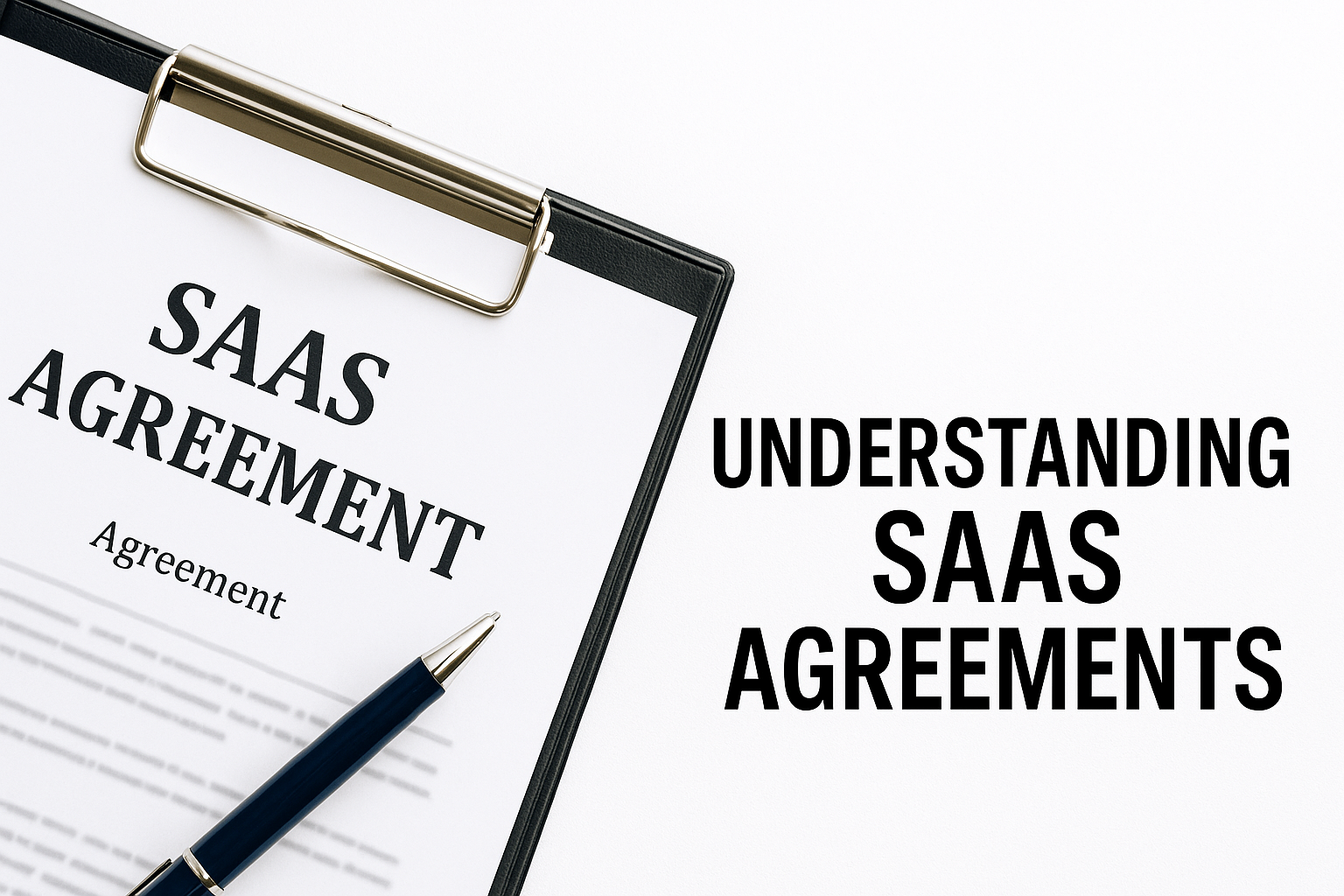
Understanding SaaS Agreements: What Businesses Need to Know
In today’s digital-first world, Software as a Service (SaaS) has become the backbone of countless businesses. From project management tools to customer relationship management platforms, SaaS solutions streamline operations and reduce the need for costly on-premise systems. But behind every SaaS product lies a crucial legal document that governs the relationship between provider and customer: the SaaS agreement.
A well-drafted SaaS agreement is more than a formality—it protects both parties, outlines responsibilities, and sets clear expectations. Whether you are a provider offering a new platform or a business subscribing to one, understanding these agreements is vital.
What is a SaaS Agreement?
A SaaS agreement is a contract between a software provider and a customer that defines the terms of access, use, and service delivery of the software. Unlike traditional software licensing, where a company buys and installs software on its own servers, SaaS agreements govern access to cloud-hosted software delivered over the internet.
This distinction means the agreement needs to cover unique aspects such as uptime, data ownership, security, and ongoing support—areas that aren’t as prominent in traditional licensing models.
Key Elements of a SaaS Agreement
- Access and Usage Rights
The agreement should clearly define who can use the software, how it can be used, and any restrictions. This prevents misuse and ensures compliance with intellectual property rights. - Service Levels (SLAs)
A critical section of any SaaS agreement is the service-level commitment. This includes uptime guarantees, response times for support, and remedies if the provider fails to meet these benchmarks. - Data Ownership and Privacy
Customers often entrust providers with sensitive business data. The agreement must clarify who owns the data, how it will be stored, and what measures are in place to ensure security and compliance with data protection regulations. - Payment Terms
SaaS is typically billed on a subscription basis—monthly, annually, or based on usage. Clear payment terms, renewal clauses, and pricing adjustments help avoid disputes down the line. - Termination and Exit Strategy
No agreement lasts forever. A strong SaaS contract should explain the circumstances under which either party can terminate the relationship, as well as how data will be returned or deleted. - Liability and Indemnity
This section protects both sides in the event of losses, breaches, or third-party claims. It ensures the customer knows the provider’s limits of liability and outlines indemnification obligations.
Why SaaS Agreements Matter
For providers, a carefully crafted agreement minimizes legal risks and builds trust with customers. For customers, it provides assurance that their data, operations, and investments are protected. In many ways, the SaaS agreement is the blueprint for a healthy and transparent business relationship.
A poorly defined agreement can lead to disputes, hidden costs, or exposure to risks like data breaches. Conversely, a well-negotiated contract fosters confidence and long-term collaboration.
Final Thoughts
SaaS agreements are more than just legal fine print—they are the foundation of successful SaaS partnerships. Both providers and customers should approach them with care, ensuring that terms are clear, fair, and aligned with business goals.
As cloud solutions continue to evolve, so too will the agreements that govern them. Staying informed and seeking legal guidance when needed can make the difference between a smooth, secure SaaS experience and a costly misstep.


